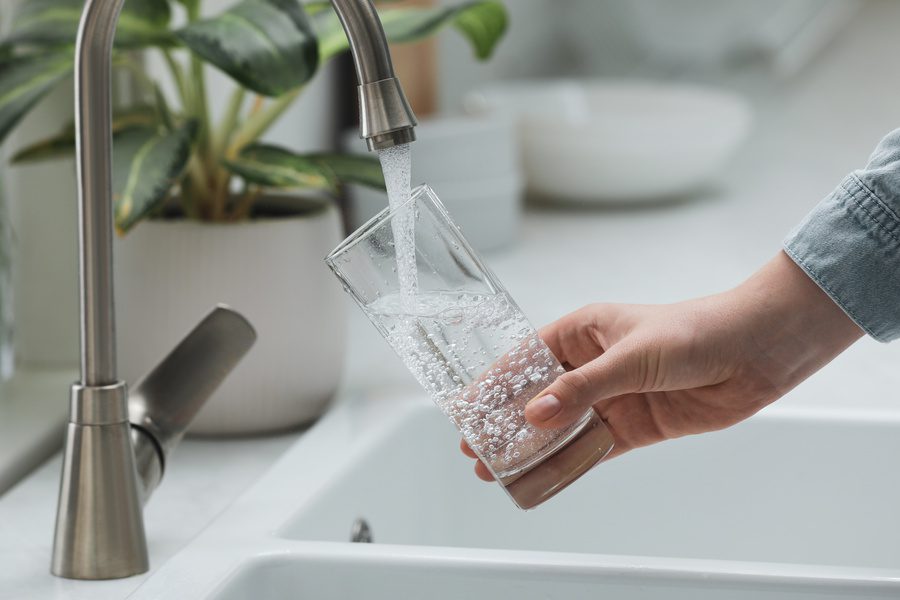Though roughly 71% of the earth’s surface is water, it isn’t as abundant as you might think. Very little of it is considered “fresh.” In fact, research suggests only 3% of water is freshwater and just half of that (1.5%) is drinkable. With the population and land development increasing at a steady pace, this alone should be reason enough to start taking steps to conserve water. It’s a finite resource, after all.
But water conservation doesn’t just limit the potential of water shortages or localized droughts. Reducing water consumption, or at least using water wisely, also conserves energy, which itself holds myriad benefits — chief among them being costs. A great deal of money goes into treating and pumping water to homes, businesses, and farms, and that expense comes back to the consumer, both directly and indirectly.
Then, of course, there’s the carbon footprint to consider. The less energy required to process and move water, the less pollution released into the atmosphere. Water usage has an environmental impact beyond waste. Besides, conserving water can make water more available for other purposes, particularly wetlands. During dry periods, water conservation ensures enough water remains for waterfowl, beavers, otters, fish, and so on.
How to Conserve Water
How to conserve water at your home is rather straightforward. It doesn’t take much effort or money to take a few simple steps to make a real impact today. Here’s where to start:
- Check your toilet. One of the easiest ways to conserve water is to check your toilet for leaks. Put a few drops of food coloring in the tank and refrain from flushing. If the water in the bowl changes color, you have a slow leak.
- Check your faucets. A small drip from an old washer in your faucet can waste a whole lot of water. Do a visual check of all the faucets in your home. You can also place a small receptacle under the faucets to determine whether you have a slow drip. Then, replace washers as needed.
- Check your water meter. Checking the water meter isn’t on most people’s radars, but this simple task can alert you to a leaky pipe or appliance. Set aside a two-hour period when no water will be used. Then, check the meter before and after this time. Seeing a change in the reading likely means you have a leak.
- Put a bottle in your toilet tank. Not all homes have water-efficient toilets. While you can always have one installed, putting a plastic bottle filled with sand in your toilet tank can have a similar impact on your water conservation efforts. Just make sure to position it away from the mechanism.
- Install water-saving showerheads. Water-efficient showerheads are another easy way to conserve water. Look for the WaterSense label, and the water usage will drop from 2.5 gallons per minute to no more than 2 gallons per minute while still providing a satisfactory shower in the process.
- Don’t let the faucet run. People can get in the habit of leaving the faucet running while brushing their teeth, shaving their face or legs, cleaning vegetables, washing dishes, and so on. Make a conscious effort to turn the faucet off as much as possible.
- Keep your drinking water in the fridge. This might not sound like much, but people have the tendency to run the tap until the water is cool enough for drinking. Keeping a refillable bottle of water in the fridge can save gallons each month.
- Run only a full washer. Whether clothes or dishes, run your dishwasher or washer only when doing a full load — no matter how water-efficient the appliance purports to be.
- Time your lawn watering. It can take a lot of water to keep up your lawn, which makes the timing of your watering even more important. Stick to early mornings when the heat and wind aren’t as high. Less evaporation means less water usage.
- Go drought-resistant with landscaping. Much like lawns, the upkeep of landscaping can take a lot of water. When planting any new trees, shrubs, or plants, opt for drought-resistant varieties.
- Mulch trees, shrubs, and plants. If you already have a fully landscaped home, consider putting a layer of much around all trees, shrubs, and plants. It slows the evaporation of water and requires less water usage to keep everything green and healthy.
As you can see, water conservation doesn’t take much time or effort. It’s all about being smart with your water usage. That’s really one of the best ways to conserve water.
If you’d like more tips and tricks on how to conserve water, please let us know. We’d be more than happy to provide you with additional information on water conservation best practices.





